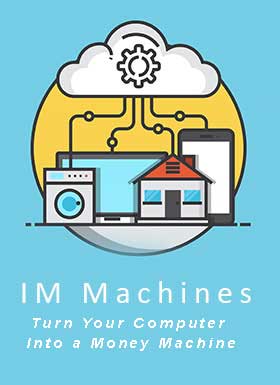Ask any solopreneur, coach, or consultant how they’re doing, and you’ll hear a variation of:
“Busy… but good.”
Translation: Overwhelmed but pretending it’s fine.
The content never ends. Clients keep emailing. Platforms shift. And the vision of “freedom” fades under the weight of constant maintenance.
Enter Sam Carpenter’s Work the System—a guide not just to working harder or smarter, but to working less by working on your systems.
In this post, we’ll break down key insights from the book and show you how to apply them to your digital business—so you can finally escape the firefighting cycle and build something sustainable, profitable, and peaceful.
🔧 The Central Premise: Your Business Is a Machine
“Your life and business are not mysterious, swirling entities. They are composed of separate, linear systems.”
Most creators and solopreneurs view their business as a chaotic blob of tasks and problems.
Carpenter urges us to zoom out.
Whether you’re launching GPT tools, delivering coaching programs, or growing a content brand, your business is a collection of systems—repeatable sequences that produce results.
When these systems are:
-
undocumented → they break
-
unoptimized → they waste time
-
entirely in your head → they enslave you
So what’s the solution?
Work the system. Don’t be the system.
🛠 Step 1: Shift from Firefighter to Engineer
Most solopreneurs operate in firefighting mode:
-
Fixing errors
-
Responding to chaos
-
Working late “just this once”… again
Carpenter’s first mindset shift is that every recurring problem is a systems problem.
The client didn’t ghost you—your onboarding system failed.
You missed the deadline—your project tracking system is flawed.
You keep rewriting the same email—because there’s no canned response system.
Stop blaming the chaos. Start asking:
What part of my business machine needs tuning?
That question alone can change your life.
📄 Step 2: Write Your Strategic Objective
Carpenter insists every business needs a single page that defines its purpose and direction. Not a vision board. Not a mission statement.
A practical, tactical Strategic Objective that answers: (my answers in italics)
-
What do you do? I create systems and processes for digital creators
-
Who do you serve? I serve +35 age group who want to supplement their income
-
How do you operate? I create systems online, amplified by AI,
-
What are your non-negotiables? Low costs, no direct staff, no creditors, no stock, location independent, online, exploit the power of AI, simplicity not complexity
For a digital creator or coach, this might be:
“I build simple, AI-powered tools that help solopreneurs grow their audience and income without burnout. I serve creators over 45 who value clarity, control, and calm. My business runs on documented systems and digital automation, not personal heroics.”
Print it. Read it daily. Align everything to it.
📋 Step 3: Document Operating Principles
The next layer is your Operating Principles—the rules you live and work by.
Example:
-
“Always keep processes simple.”
-
“Respond to client requests within 24 hours.”
-
“Avoid custom projects—productize services.”
These principles guide your decisions, reduce stress, and prevent you from reinventing the wheel every day.
They become your standard operating system—the mindset behind your systems.
🔁 Step 4: Create Working Procedures
Here’s where things get tactical.
Your goal is to systematise the things you do more than once.
Think:
-
How you create blog posts
-
How you deliver coaching sessions
-
How you repurpose a YouTube video into 5 pieces of content
-
How you pitch a GPT product or run a mini-launch
Each one should have a procedure—a document, checklist, or video showing exactly how it’s done.
Why?
-
It reduces errors
-
It makes delegation possible
-
It saves hours of mental bandwidth
Remember: Systems aren’t restrictive. They’re freeing. You create once. Then execute with zero friction.
🤖 Solopreneur Use Cases: How to Apply the System Mindset
Let’s break this down by creator type:
✍️ Digital Creators
-
Create a system for idea capture → sort ideas by format
-
Build a GPT-assisted workflow (Prompt Builder Pro, Repurposer Pro)
-
Schedule a week of content using a single input and template set
-
Automate publishing using tools like Notion + Zapier + Buffer
🎓 Coaches
-
Create a coaching session framework (5 stages per call)
-
Systematize onboarding with forms, contracts, and welcome emails
-
Use a client portal or dashboard (Google Drive, Notion, or Simplero)
-
Automate post-session follow-ups and homework delivery
💼 Consultants
-
Standardize your discovery and proposal system
-
Productize your audit or assessment process
-
Create SOPs for client deliverables—whether that’s marketing plans, operations maps, or branding guides
🤹 Multi-Hat Solopreneurs
-
Start with what you hate most—turn it into a system
-
Outsource using Loom + SOPs
-
Weekly system review: What broke? What worked? What’s next?
⚠️ Warning: Systems Without Simplicity Become Burdens
Carpenter is clear: systems don’t mean over-complication.
Your job is not to build a bureaucracy. It’s to:
-
Eliminate friction
-
Enable clarity
-
Improve consistently
If a system is too complex to follow, it will break.
So build simple flows:
-
Use checklists.
-
Name your files consistently.
-
Keep templates handy.
-
Use shared docs instead of fancy dashboards.
Simplicity = scalability.
🧘 The Peace of System-Driven Business
Carpenter doesn’t just want you to succeed—he wants you to be free.
Because when your business is systemised:
-
You don’t panic when you get sick
-
You can unplug without guilt
-
You can say “yes” to growth without fearing collapse
-
You gain creative energy back—because chaos no longer drains you
Systems don’t kill creativity. They protect it.
💬 Bonus: What About AI?
Today, GPT tools like ours are systems—packaged intelligence, replicable workflows, codified problem-solving.
The best part?
You can use systems to:
-
Build GPTs faster (using a GPT creation SOP)
-
Promote them consistently (launch + content calendar system)
-
Sell them in your funnel (sales page + checkout + automation)
AI becomes your digital team—but it only works well when plugged into real business systems.
As Carpenter would say:
“A good system, run by a good person, creates extraordinary results.”
🧠 Final Words: You Are the System Designer
Sam Carpenter’s Work the System is not about being more productive. It’s about being more intentional.
If you’re a solopreneur chasing peace, profit, and purpose, this book is your playbook.
Here’s your next step:
-
Write your Strategic Objective
-
Draft 5 Operating Principles
-
Document 3 high-impact Working Procedures
-
Systemize your week, one bottleneck at a time
Do this for 90 days, and your business will feel lighter, clearer, and saner.
You’ll no longer be the system.
You’ll be the builder of the system.
And that’s when the game changes.







[…] Previous […]